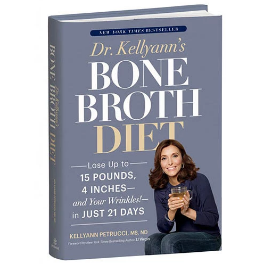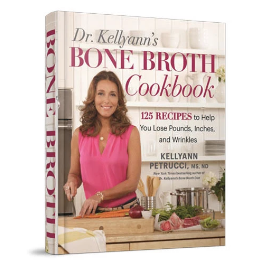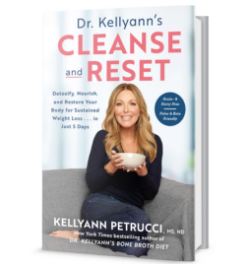
How To Freeze Chicken Broth: Step-by-Step
Embrace the benefits of freezing broth and transform your culinary habits. This practical approach not only preserves the rich flavors of your homemade creations but also offers significant time and cost savings. Whether you're a busy parent or a culinary enthusiast, freezing broth can simplify meal preparation and enhance your kitchen efficiency. Explore the advantages of this method and elevate your cooking game.
Why Should You Freeze Chicken Broth?
Freezing chicken broth is a highly effective method for extending the shelf life of this versatile kitchen staple, ensuring you always have a nutritious and flavorful ingredient on hand. By freezing, you preserve the broth's rich taste and essential nutrients, such as collagen and minerals, which are crucial for enhancing the quality of your meals. This method not only prevents spoilage but also reduces food waste, as you can store excess broth for future use rather than discarding it. Having a stock of frozen broth readily available simplifies meal preparation, allowing you to quickly add depth and flavor to soups, stews, and sauces without the need for time-consuming cooking sessions. Moreover, freezing broth supports efficient meal planning and budgeting, as it minimizes the need for frequent grocery trips and impulse purchases. By extending the shelf life of the broth, you ensure that this valuable culinary resource is always at your fingertips, ready to elevate your cooking with minimal effort.
How To Freeze Chicken Broth: Step-by-Step
Step 1: Prepare the Broth
Begin by making a flavorful chicken broth using quality ingredients such as chicken bones, meat, and aromatic vegetables like onions, carrots, and celery. Simmer these ingredients in water for several hours to extract maximum flavor and nutrients. Once the broth is ready, strain it to remove solids, leaving you with a clear, rich liquid.
Step 2: Cool the Broth
Allow the strained broth to cool to room temperature. This step is crucial to prevent the growth of bacteria and to ensure that the broth freezes evenly. You can speed up the cooling process by placing the pot in an ice bath or dividing the broth into smaller containers.
Step 3: Skim the Fat
Once the broth has cooled, skim off any fat that has risen to the surface. Removing excess fat not only improves the broth's texture and flavor but also helps it freeze better. Use a spoon or a fat separator to achieve this.
Step 4: Portion the Broth
Decide on the portion sizes that best suit your cooking or recipe needs. You can use ice cube trays for small stock amounts with thyme and bay leaves for added aroma, perfect for adding a splash of flavor to dishes, or larger containers for soups and stews. Portioning makes it easy to thaw just the right amount when needed.
Step 5: Choose the Right Containers
Select freezer-safe containers or bags to store your broth, considering freezing tips and food preservation techniques to ensure maximum preservation. Ensure they are airtight to prevent freezer burn and preserve the broth's quality. If using bags, lay them flat in the freezer to save space and allow for quicker thawing.
Step 6: Label and Date
Clearly label each container or bag with the contents and the date of freezing. This practice helps you keep track of how long the broth has been stored and ensures you use the oldest broth first, maintaining freshness and flavor.
Step 7: Freeze the Broth
Place the labeled containers or bags in the freezer, ensuring they are stored in a way that allows for even freezing. Once frozen, the broth can be stored for up to six months, ready to be used whenever you need a quick and nutritious addition to your meals.
Does Chicken Broth Freeze Well?
Frozen chicken broth and unfrozen chicken broth are fundamentally the same in terms of their core ingredients and nutritional content, as both are made from simmering chicken bones, meat, and vegetables to extract flavors and nutrients. However, the primary difference lies in their state and storage method. Frozen chicken broth is preserved by being stored at low temperatures, which extends its shelf life and maintains its quality over time. This process ensures that the broth's rich flavors and nutritional benefits, such as collagen and essential minerals, are retained until it is thawed and used. On the other hand, unfrozen chicken broth is fresh and ready for immediate use, offering convenience for spontaneous cooking but with a shorter shelf life. While both forms provide the same culinary benefits, freezing offers the advantage of long-term storage and reduced food waste, making it a practical option for meal planning and preparation.
How Much Chicken Broth Can You Freeze?
The amount of chicken broth you can freeze largely depends on the capacity of your freezer and the storage containers you choose. Practically, you can freeze as much broth as your freezer space allows, provided you use appropriate containers that are freezer-safe and airtight to prevent freezer burn. It's advisable to freeze broth in portions that suit your cooking habits, such as using ice cube trays for small amounts or larger containers for soups and stews. This flexibility in portioning ensures you can easily thaw the exact amount needed for recipes, minimizing waste. Additionally, labeling each container with the date and portion size helps manage your inventory efficiently, allowing you to keep track of how long the broth has been stored and ensuring you use it while it's still fresh. By organizing your freezer space effectively, you can maximize the amount of chicken broth stored, providing a convenient and nutritious ingredient ready for future meals.
What Is The Best Container To Freeze Broth In?
When selecting the best container to freeze broth, it's important to consider options that are freezer-safe, airtight, and durable to maintain the broth's quality and nutritional value. Glass jars with wide mouths are ideal as they minimize the risk of cracking by allowing for expansion. Plastic containers designed for freezing offer a lightweight and stackable alternative, making them convenient for organizing your freezer space. Heavy-duty freezer bags, such as Ziploc bags, are also excellent for saving space, as they can be laid flat, ensuring even freezing. Whichever container you choose, ensure it is sealed tightly to prevent freezer burn and leaks. Additionally, labeling each container with the date and portion size helps you manage your inventory efficiently. By using the right containers, you can preserve the broth's nutritional value, ensuring that a healthy and flavorful ingredient is always ready to enhance your meals.
Can I Freeze Chicken Broth In Ziploc bags?
Yes, you can freeze chicken broth in Ziploc bags, which is an efficient and space-saving method for storing broth. Using Ziploc bags allows you to lay the bags flat in the freezer, maximizing space and ensuring even freezing. To do this, pour the cooled chicken broth into the bags, leaving some space at the top to allow for expansion as the liquid freezes. Seal the bags tightly to prevent leaks and freezer burn, which can affect the broth's quality and flavor. It's also helpful to label each bag with the date and portion size, so you can easily keep track of your inventory and use the oldest broth first. This method not only helps in organizing your freezer but also provides the convenience of thawing just the right amount needed for your recipes, reducing waste and ensuring you always have a nutritious ingredient ready to enhance your meals.
Common Mistakes To Avoid When Freezing Chicken Broth
- Not Cooling the Broth Properly: Failing to let the broth cool completely before freezing can lead to the growth of bacteria and affect the quality of the broth. Always ensure the broth reaches room temperature before transferring it to the freezer.
- Using Inappropriate Containers: Using containers that are not freezer-safe or airtight can result in freezer burn, which compromises the flavor and texture of the broth. Opt for high-quality, airtight containers or freezer bags designed for freezing liquids.
- Overfilling Containers: Filling containers to the brim without leaving space for expansion can cause them to crack or leak as the broth freezes. Always leave about an inch of space at the top to accommodate expansion.
- Not Labeling and Dating: Skipping the step of labeling containers with the date and contents can lead to confusion and waste. Proper labeling helps you keep track of how long the broth has been stored and ensures you use it while it's still fresh.
-
Freezing in Large Portions Only: Freezing broth in large portions can be inconvenient when you only need a small amount for a recipe. Consider using ice cube trays or smaller containers to freeze broth in versatile portions, allowing for easy thawing and use.

Conclusion
In conclusion, the cooking methods and storage techniques you choose for chicken broth can significantly impact your kitchen efficiency and meal planning. Freezing stands out as a particularly effective strategy, allowing you to maintain a ready supply of nutritious broth that saves both time and money. By exploring various storage options, such as canning or dehydrating, you can tailor your approach to suit your lifestyle and cooking preferences. With these techniques, you can enjoy the convenience of having flavorful broth on hand, ensuring that every dish you prepare is enriched with quality and taste.
Final Thoughts
In what ways can frozen chicken broth contribute to a healthier lifestyle? Dr. Kellyann's premium bone broths, offered in chicken, beef, and French onion flavors, are a tasty and nutritious option. Packed with collagen, non-GMO, and free from sugar, these broths are ideal for fasting and enhancing your body's recovery. Explore Dr. Kellyann's selection of wellness products to support your path to optimal health and vitality.
Sources







